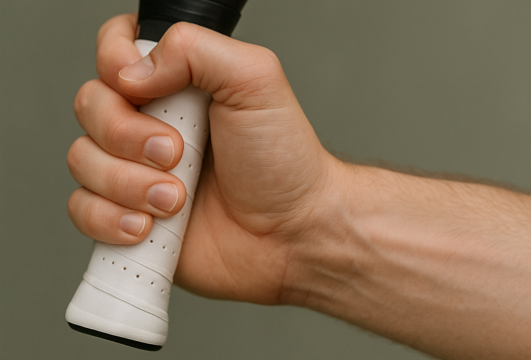
Grip It Right: The Best Grips for Padel and Pickleball Players
Grip It Right: The Best Grips for Padel and Pickleball Players
Grips are the foundation of every shot in padel and pickleball. Using the right grip not only improves your control and power but also reduces the risk of injury. Whether you’re just starting out or looking to refine your technique, understanding padel grip styles and pickleball grip techniques is essential for progression.
Understanding the Basics: Why Grip Matters
Both padel and pickleball require quick reflexes and varied shot-making skills. The way you hold your racket or paddle impacts your ability to generate spin, control ball trajectory, and respond efficiently during rallies. A proper grip aligns the wrist and forearm, enabling smoother strokes and more consistent performance.
The Grip Styles Explained
In both sports, the grips commonly relate to the bevels of the racket handle and how they correspond to different hand positions. The main grips to know are Continental, Eastern, and Western.
Continental Grip
- Position: Base knuckle on bevel 2 (assuming standard 8 bevels labelled clockwise from the top)
- Use: Versatile, especially good for volleys, serves, and overheads
- In Padel: Favoured for quick net play and defensive shots
- In Pickleball: Ideal for dinks and serves due to ease of wrist movement
Eastern Grip
- Position: Base knuckle on bevel 3
- Use: Balanced for both forehands and backhands, offering control with moderate spin
- In Padel: Favoured for groundstrokes and approach shots
- In Pickleball: Common choice for baseline rallies and drives
Western Grip
- Position: Base knuckle on bevel 5
- Use: Produces heavy topspin, less natural for volleys
- In Padel: Less often used but helpful for aggressive topspin shots
- In Pickleball: Less common, as it’s harder to manage quick reaction shots
Comparing Grip Effects on Performance
| Grip Type | Spin Generation | Control | Power | Best For |
|---|---|---|---|---|
| Continental | Moderate | High (net play) | Moderate | Volleys, serves |
| Eastern | Balanced | High | Balanced | Baseline rallies |
| Western | High | Lower | High | Topspin-heavy strokes |
Practical Checklist for Choosing Your Grip
- Identify the shots you use most (volleys/net, baseline, serves)
- Test hand position comfort and wrist flexibility
- Match grip to your dominant playing style (defensive, offensive, all-court)
- Ensure your grip allows quick transitions between shots
- Avoid over-tightening; maintain a relaxed yet firm hold
- Frequently inspect your grip tape for wear and replace as needed
Common Mistakes with Padel and Pickleball Grips
- Too tight a grip: Leads to fatigue and reduced wrist mobility
- Incorrect bevel placement: Causes inconsistent shot direction and timing
- Neglecting grip comfort: Can result in blisters or grip slippage during play
- Sticking to one grip rigidly: Limits adaptability across various shots
Pro Tips for Improving Your Grip Technique
- Practice switching between continental and eastern grips for versatility.
- Use drills focusing on wrist movement to enhance control.
- Record your strokes to observe grip effectiveness and make adjustments.
- Seek feedback from coaches to identify unnatural grips or tension.
FAQs about Padel and Pickleball Grip Techniques
Q1: Can beginners use the western grip in padel or pickleball?
A: Beginners can experiment with the western grip but usually benefit more from the continental or eastern grips due to their versatility and easier handling.
Q2: Is it okay to change grips during a match?
A: Yes, varying your grip as needed during play helps adapt to different shots and situations, especially in padel where quick reactions are essential.
Q3: How often should I change my grip tape?
A: Replace grip tape when it becomes slippery, worn out, or less cushioned—typically every few months for regular players.
Learn more about accessories that enhance comfort in our Padel Accessories Guide.
Grip with confidence. Find your adVANTAge.
